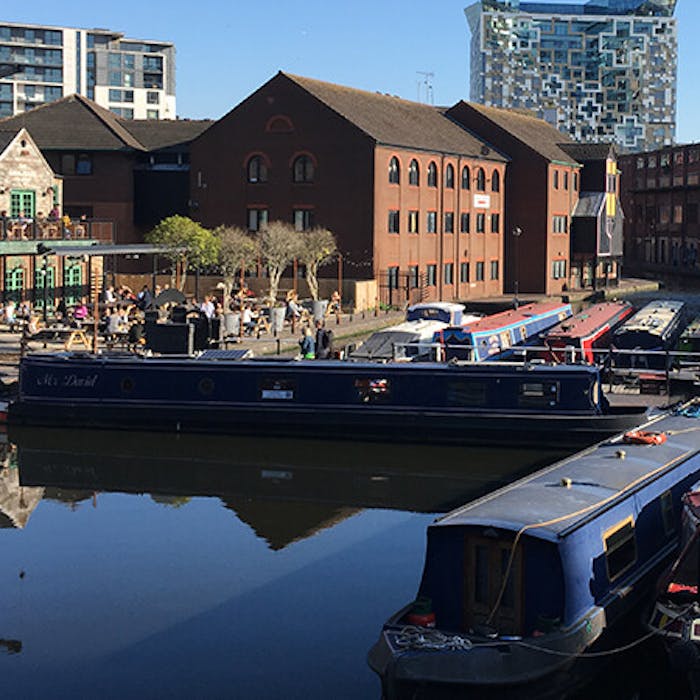
Birmingham Canal Navigations - more miles of waterway than Venice
The city of Birmingham has 35 miles of canals, which is a longer network than that of Venice. A legacy of the area's unique industrial history, they're now enjoyed by walkers, cyclists, and narrowboat leisure users.
The full Birmingham Canal Navigations network (BCN) was a system of canals connecting Birmingham, Wolverhampton, and the eastern part of the Black Country, linked to the rest of the English canal system at several junctions. At its working peak, the BCN contained about 160 miles of canals, today just over 100 miles are navigable.
Most of the British canals were built in the 1700s and 1800s. At its height the BCN had more than 170 miles of them, carrying supplies by the traditional narrowboats to and from factories and into trading areas. One of the first to be built was the Duke of Bridgewater's Canal, which was finished in 1761, and which carried the Duke's coal from inside the mines of Worsley, to Manchester, 15 miles away.
Much of the engineering work for the Birmingham network was planned and supervised by James Brindley, one of the most notable engineers of the 18th century. He worked on six canal projects in the Midlands, and is commemorated in the new development area around the canals known as Brindley Place..
After the Bridgewater Canal, next to be built was the Birmingham and Fazeley Canal, from Birmingham to Tamworth, in 1784. The Birmingham Canal Company subsequently merged with the Birmingham and Fazeley Canal Company, and became known as the Birmingham Canal Navigations from 1794, as the network was expanded.
For 170 years the canal system was bustling with working activity. At their height, it was so busy that gas lighting was installed beside the locks to permit round-the-clock operation. Boats were built without cabins for maximum carrying capacity, and a near-tidal effect was produced as swarms of narrowboats converged on the Black Country collieries at the same time every day.
Although profitable, the canals were costly to build and maintain. In the 1820s engineer Thomas Telford was employed to inspect Birmingham's canals, which had severe maintenance problems. He suggested an overhaul of the canal system, which included the straightening of many canals.
As canalside industries declined, and railways and roads took over the long distance transportation of goods, use of the canals decreased. By 1980 all commercial traffic had stopped, and over the years much of the canal network fell into disrepair. Its leisure and urban renewal potential was then recognised, and many have since been restored and their surroundings improved. In the centre of Birmingham, the BCN network had its focus in Gas Street Basin, where regeneration now means old meets new, and the canalside around this attractive heritage location are lined with bars, pubs and modern buildings with some of the traditional narrow boats moored here, setting the scene for industrial heritage meeting modern metropolitan living.
Further reading
Links to external websites are not maintained by Bite Sized Britain. They are provided to give users access to additional information. Bite Sized Britain is not responsible for the content of these external websites.
